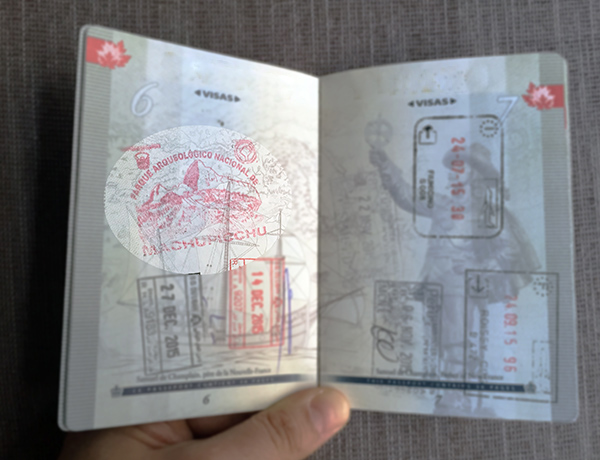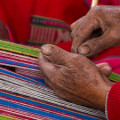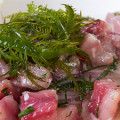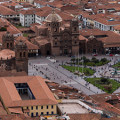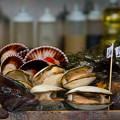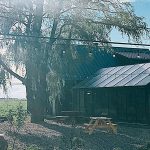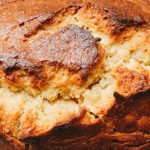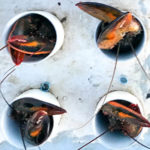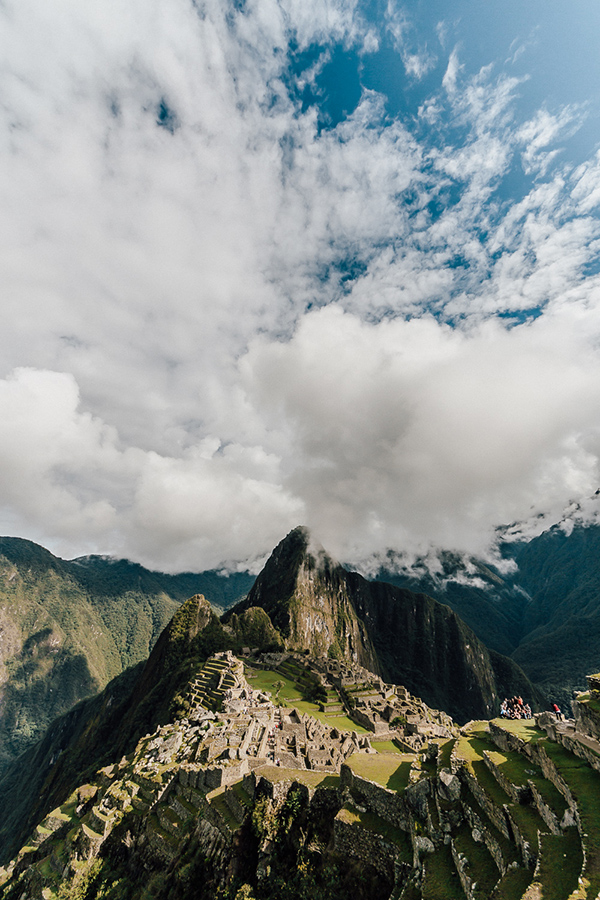
Machu Picchu in all its glory! {photo © mrb404}
In part 2 of my articles on the Sacred Valley, I had last left off after visiting the Inca site of Ollantaytambo, the Salt Ponds of Maras and the crop circles of Moray. After lunch in Urubamba, we hopped on the train to Aguas Calientes, the train’s ultimate stop at this last village at the very foot of Machu Picchu. Peru Rail offers different train services and classes of travel but I highly recommend buying a first class seat in the Vistadome panoramic train so you can admire the breathtaking views of the surrounding mountains as you make your way to Aguas Calientes. If you decide to go with a tour operator like Antipode, the one we used, they will take care of all those details for you and act as guide once you get to Machu Picchu. You can’t bring large luggage on the train so leave your suitcase at your hotel in Cuzco (which you will be going back to on the way back from Machu Picchu) and pack a small bag with all you’ll need for the two or three nights you spend in the Sacred Valley (read more about my recommendations on what to know before you head to Peru).
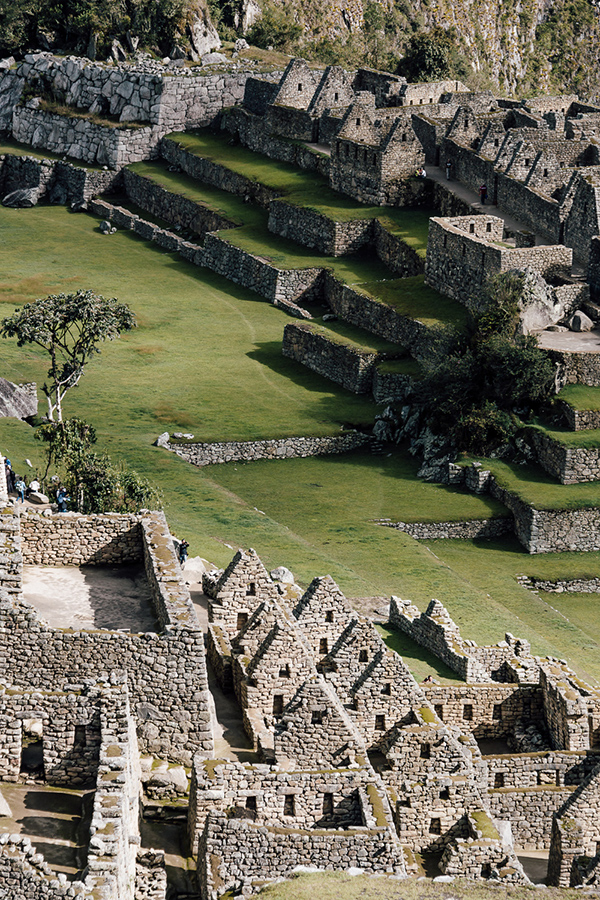
A closer look at a cluster of buildings at Machu Picchu {photo © mrb404}
Any trip to the Sacred Valley feels like a pilgrimage to Machu Picchu. Although you are constantly surrounded by beauty and wonder while you’re visiting all the other archeological sites of the Valley, the anticipation grows stronger the closer you get to the Inca’s greatest and best preserved achievement. It really does feel like it’s all about the destination but don’t let it distract you too much from the whole journey, which is pretty amazing in and of itself. They say that the best way to get to Machu Picchu is to hike the Inca Trail, built by the Inca and still praticable to this day. I am not in great shape so I didn’t want to risk walking there. I might have regretted not having done at least one day of hiking but you’ll never get me to admit it(!). Most people will take the easy way and make their way to Machu Picchu by train and bus.
Nowhere does this pilgrimage impression feel stronger than once you arrive in Aguas Calientes, a small village that feels like nothing more than a point of passage for tourists heading to Machu Picchu, a few kilometres further up the mountain. From the minute you get off the train at Aguas Calientes, you are accosted by dozens of shacks peddling colourful souvenirs set up in such a way that you have no choice but to walk through this maze to get to the other side of the Urubamba river where the village is. There’s really nothing much to do in Aguas Calientes but pass the time until you can hop on that bus for the 30-minute ride up the sinuous mountain road to your final destination. Buses start heading up to the ruins at 5:30am and most tourists rush to be on that first ride so they can get a pristine picture without any people in it. However, mist covers the top of the mountain on most early mornings so it is much better to catch a bus around 7am. And besides, the people in your picture will be so small, they will look like nothing more than colourful dots scattered here and there and adding even more texture to the incredible landscape.
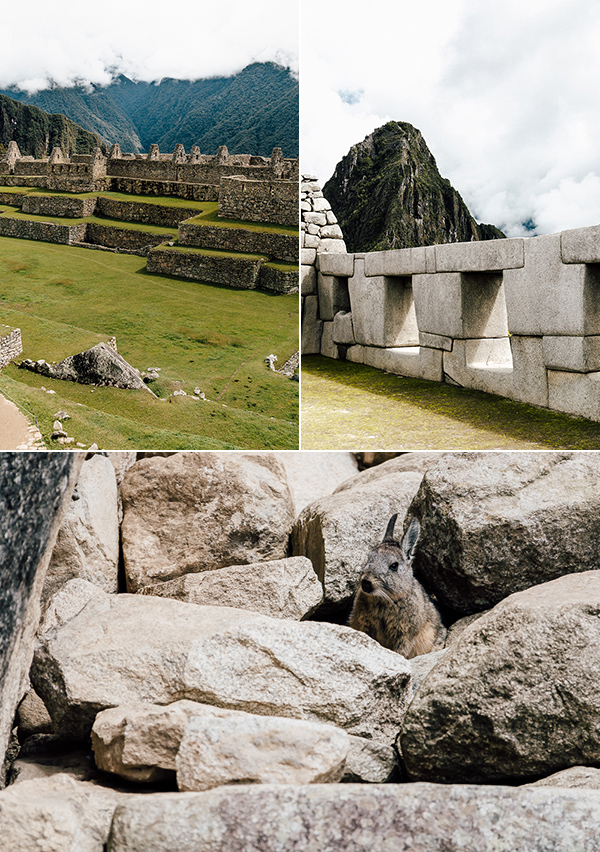
The amazing Inca architecture of Machu Picchu. Can you spot the chinchilla in the bottom photo? {photo © mrb404}
There are really no words to describe the feeling of finally standing at the top of the mountain and looking down at the extensive maze of buildings surrounded by dramatic mountain peaks. No matter how many photos I’d seen or how many documentaries I’d watched, the view took my breath away. I could’ve stood there forever and never tired of the overwhelmingly majestic view. I tried to drink it all in but couldn’t quench my thirst. After the initial sighs of delight and the many photos, I sat down and stared at the view for a long time while pinching myself. The surrounding sounds hushed down while the morning mist was lifting, making the mountain twirl and transform before my very eyes. After what seemed like an eternity, it was finally time to get up and start exploring.
I highly recommend you get a local guide to show you around the ruins. Yes, you can save a few dollars and follow a guide book but you will miss out on the passionate speech and anecdotes only a guide can provide. You made it all the way to Machu Picchu, splurge and get a guide, you won’t regret it. The tour of the ruins takes a couple of hours. You can then hike up the steep Huayna Picchu hill if you choose to. You’ll need to pre-book a separate ticket for that since only 400 people are allowed to hike it daily. You also have to be in great shape to climb the exposed rail and steep steps but the view from up there will be worth it.
Built in 1450, it is believed that Machu Picchu was conceived as a residence for Inca emperor Pachacutec. The 200-building strong city was built on a plateau between the Machu Picchu and Huayna Picchu mountains at 2430 meters above sea level. Although the Spanish conquistadors never discovered Machu Picchu, it was mysteriously abandoned about 100 years after it was built, at the height of the Spanish colonization of the Sacred Valley. Did the Inca flee for fear of being discovered? Did they get the flu and die? It is all still a mystery. The fact that the Spanish never discovered Machu Picchu means that they never had the chance to plunder or deface it like they did other sites, which is why this one is the most majestic and best preserved Inca city. The indigenous people knew about Machu Picchu and some of them even lived on the site and exploited the agricultural terraces built by the Inca but it wasn’t “discovered” in western terms until a local farmer boy led American historian Hiram Bingham to the extensive ruins in 1910.
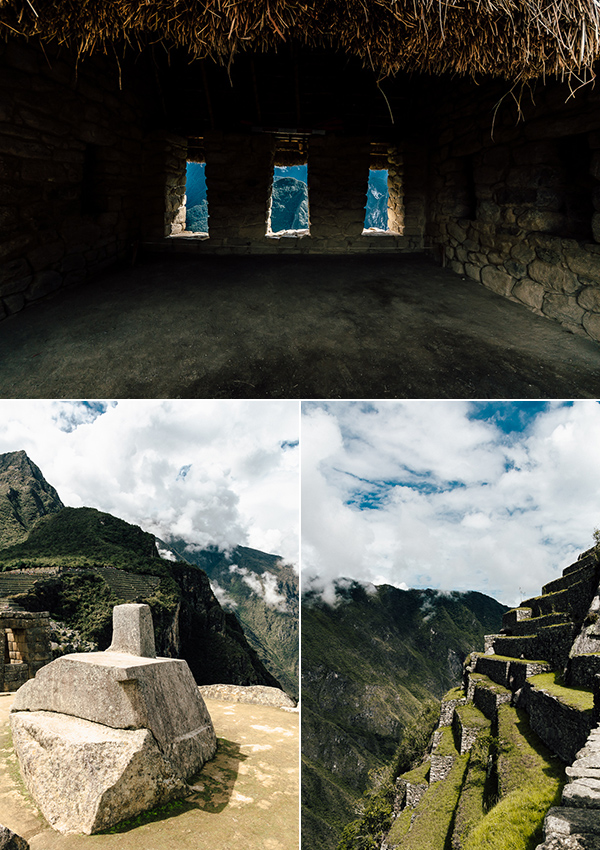
Watchman’s Hut, the sundial and the steep terrasses of Machu Picchu {photo © mrb404}
Surrounded by steep mountains, the city was strategically located and not easily accessible. I was struck by the number of agricultural terraces built everywhere. Every parcel of land, no matter how small, was turned into a plot, which translated into Machu Picchu producing more crop than it ever needed for its citizens. The city–like all other Inca cities–utilizes a brilliant irrigation system that uses streams and gravity to water the terraces. The city was built around a central square that separates the noble, residential side from the popular one and the ceremonial buildings to the north from the warehouses to the south. The architecture is typical Inca carved stones set to fit perfectly together with no masonry, which helped the buildings withstand all the local seismic activity. The stones are so well carved and fit so perfectly together I remember thinking that today’s architects could to learn a thing or two from the Incas.
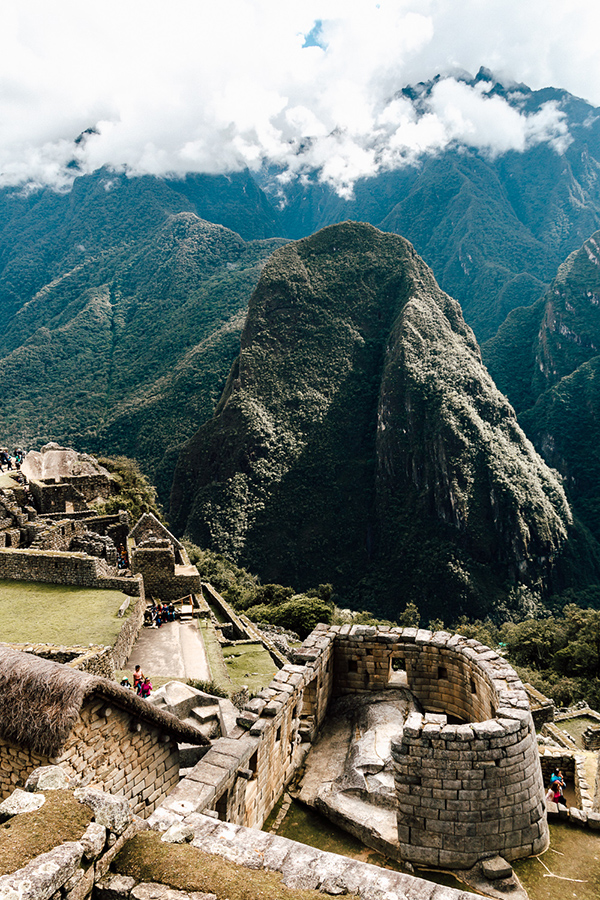
Machu Picchu’s Temple of the Sun is the only round building on the site {photo © mrb404}
Every turn, every detail, every vista at Machu Picchu is awe inspiring. If you have a guide, the tour of Machu Picchu will take about two to three hours during which you will learn so much about the Inca culture and develop so much respect for them. You can then choose to roam around the ruins on your own or take the bus back down to Aguas Calientes for lunch only to visit again in the afternoon. Your entrance ticket allows multiple entries.
Entire books have been written about Machu Picchu and I obviously cannot possibly mention everything in this blog post but below are a couple of reminders to keep in mind if you do plan on visiting.
MACHU PICCHU CHECK LIST
- Machu Picchu limits the amount of visitors per day so make sure you buy your entrance ticket as soon as you confirm your date. Check here for updated info on tickets and entrance time restrictions.
- Only 400 daily visitors are allowed to hike Huayna Picchu. If you feel up to it, buy your pass in advance.
- I highly recommend getting a local guide to show you around Machu Picchu. You can then roam around the ruins by yourself and immerse yourself even more in the wonder of the Inca culture.
- The mosquitoes at Machu Picchu are nasty so douse yourself in bug spray and wear light coloured clothes.
- Don’t forget your sunscreen and a hat! The sun is merciless even when it’s cloudy.
- Note that the rainy season is from October to April but it can rain at any time, so don’t forget to pack your rain gear. The weather changes very rapidly in Peru.
- Don’t forget to stamp your passport on your way out of Machu Picchu. It’s a do-it-yourself stamp and the desk is located on your right as you come down the last flight of stairs before you exit through the gate.
- Food is not allowed inside the ruins. There’s a snack bar outside the gate as well as a buffet restaurant (see below) or you can get your hotel or a café (see below) in Aguas Calientes to pack you a lunch and find a quaint spot outside the gate to picnic in. Water is allowed inside Machu Picchu.
- Buses from Aguas Calientes to Machu Picchu run from 5:30am to 3:30pm with the last bus leaving Machu Picchu at 5:45pm.

Aguas Calientes and the Peru Rail train {photo © mrb404}
WHERE TO EAT
La Boulangerie de Paris (Sinchi Roca, Aguas Calientes) was opened by a French expat and serves espresso based coffees, French pastries (you will be so happy to bite into a pain au chocolat or croissant!) and light meals. They can also pack a boxed lunch for you to enjoy at Machu Picchu, where the food options are limited and pricey.
Restaurant Indio Feliz is a large size franco-peruvian restaurant that’s helmed by a French chef. The eclectic decor, lively ambiance and warm welcome make this a great choice and good value for the quality of food served.
Tinkuy Buffet Restaurant at the Belmond Sanctuary Lodge at Machu Picchu offers a daily buffet lunch with several options. It’s expensive in Peru standards but has the advantage of being close to the Machu Picchu entrance and has nice surrounding views of the mountains. Open 11am to 3:30pm.
WHERE TO STAY IN AGUAS CALIENTES
I had heard so many reports about how small Aguas Calientes is and how accommodations and restaurants are really bad. However, I was pleasantly surprised with Hotel El Mapi, which Antipode had reserved for us. It was clean, comfortable and clearly geared towards the needs of foreign tourists who were in town for one or tow nights. Bottled water was available in the room as well as good amenities. A bar and a restaurant are available at the hotel. Don’t expect world class dining but the food options are not too bad.
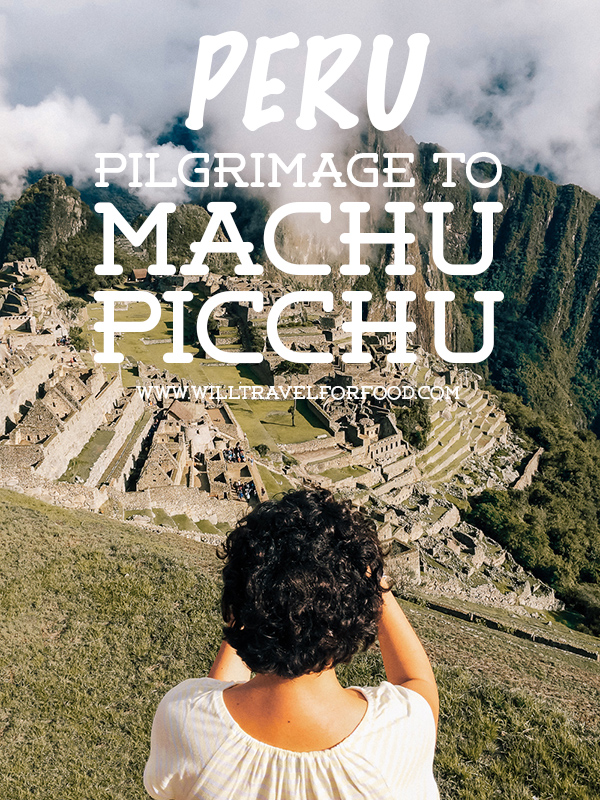
Pin it to save it! {photo © mrb404}
Read Part I and Part 2 of my Sacred Valley articles, as well as more on my Peruvian adventures here. Stay tuned for more articles on the Lima food scene soon!


